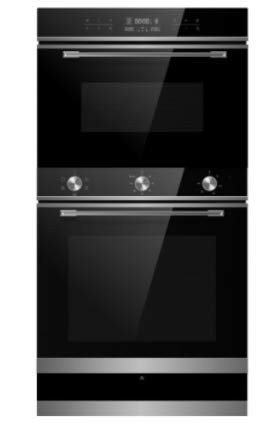Ten Things You Learned In Kindergarden Which Will Aid You In Obtaining Hobs And Ovens
Understanding Hobs and Ovens: A Comprehensive Guide for Cooking Enthusiasts
The kitchen is frequently regarded as the heart of the home, where culinary developments come to life. 2 necessary components of any kitchen are the hob and the oven. While they are both crucial for food preparation and cooking, numerous homeowners may not fully understand the differences, performances, and various types readily available in the market today. In this short article, we will check out these appliances in detail, assisting you make notified decisions for your cooking requirements.
Tabulation
- What is a Hob?
- 1.1 Types of Hobs
- 1.2 Benefits of Different Hob Types
- What is an Oven?
- 2.1 Types of Ovens
- 2.2 Benefits of Different Oven Types
- Picking the Right Hob and Oven for Your Kitchen
- Often Asked Questions (FAQs)
- Conclusion
What is a Hob?
A hob, frequently understood as a cooktop, is a cooking surface area that you place pots and pans on to prepare food. It features a series of heating elements and is often installed on counter tops. In modern kitchens, hobs are available in numerous styles, innovations, and performances.
1.1 Types of Hobs
There are a number of kinds of hobs offered in the market:
Type
Description
Gas Hob
Uses gas burners for cooking, using precise temperature control.
Electric Hob
Operates using electrical heating components, typically seen in solid or radiant types.
Induction Hob
Utilizes electromagnetic fields to heat pots and pans straight, promoting energy efficiency.
Ceramic Hob
Functions a smooth glass top, utilizing electric coils underneath the surface.
Strong Plate Hob
Conventional electric hobs with exposed metal plates that warm up.
1.2 Benefits of Different Hob Types
Gas Hobs:
- Quick heating & cooling.
- Visual flame control for exact cooking.
Electric Hobs:
- Even heating; suitable for simmering and boiling.
- Easy to clean up, particularly flat surface areas.
Induction Hobs:
- Energy-efficient as just the pot heats up.
- Safety functions, such as automatic shut-off.
Ceramic Hobs:
- Attractive aesthetic appeals with a smooth surface.
- Even surfaces for simple cleaning.
Solid Plate Hobs:
- Cost-effective and long lasting.
- Helpful for fundamental cooking requirements.
What is an Oven?
An oven is a kitchen appliance used for baking, roasting, and broiling food. Ovens can be standalone systems or built into kitchen cabinets, offering various cooking approaches that can enhance or transform ingredients.
2.1 Types of Ovens
Similar to hobs, there are several types of ovens, each with its advantages:
Type
Description
Conventional Oven
Runs with heating aspects, ideal for baking.
Stove
Utilizes fans to distribute hot air, cooking food equally and rapidly.
Microwave
Cooks food using electromagnetic radiation; suitable for reheating.
Steam Oven
Utilizes steam to cook food, maintaining wetness and nutrients.
Wall Oven
Built into the wall, providing benefit and visual appeal.
2.2 Benefits of Different Oven Types
Standard Ovens:
- Simple to utilize with no complex settings.
- Versatile for numerous cooking approaches.
Convection Ovens:
- Faster cooking times due to air flow.
- Boosted browning and crisping for baked items.
Microwave Ovens:
- Quick cooking or reheating of food.
- Energy-efficient for low-volume cooking.
Steam Ovens:
- Health-conscious cooking that retains nutrients.
- Exceptional for baking bread and cooking veggies.
Wall Ovens:
- Convenient positioning; conserves area.
- Less flexing needed to gain access to cooking meals.
Picking the Right Hob and Oven for Your Kitchen
When picking a hob and oven, factors such as area, cooking design, and personal preferences should be thought about. Here's an easy guide to assist you select:
Factors to Consider
- Cooking Needs: Evaluate your cooking routines. Do you frequently bake, or is stovetop cooking more prevalent?
- Space Availability: Measure your readily available kitchen space. Some hobs or ovens may require more space than others.
- Fuel Type: Decide in between gas and electric, based on availability and individual choices.
- Spending plan: Determine what you're ready to spend and discover choices within that variety.
Quick Tips
- Prioritize Efficiency: Look for energy-efficient models to reduce long-lasting costs.
- Check out Reviews: Explore user evaluations to collect opinions on performance and reliability.
- Seek advice from Professionals: Seek advice from kitchen design professionals when preparing your layout.
Regularly Asked Questions (FAQs)
1. What is the distinction between a hob and an oven?
A hob is a cooking surface normally for stovetop cooking, while an oven is an enclosed area utilized for baking, roasting, and broiling food.
2. Can I utilize any pot on an induction hob?
No, induction hobs need magnetic cookware. Stainless steel and cast iron pots work, however non-magnetic products like aluminum will not.
3. How do stove vary from conventional ovens?
Convection ovens use fans to distribute hot air for even cooking, whereas standard ovens do not have this function.
4. Is it possible to have both a hob and oven as a single system?
Yes, there are range cookers that incorporate a hob and an oven within one appliance, providing a thorough cooking solution.
5. How do I tidy my hob and oven?
Many hobs and ovens have recommended cleansing approaches depending on their materials. It is suggested to consult the maker's instructions for the best practices.
Comprehending the distinctions in between hobs and ovens is vital for anybody aiming to optimize their kitchen area or enhance their cooking skills. By understanding Ovens And Hobs , their advantages, and how to choose the right ones for your requirements, cooking can end up being a more satisfying and effective experience. Whether you are a knowledgeable chef or a beginner cook, the ideal combination of hob and oven can raise your cooking creations to brand-new heights.
